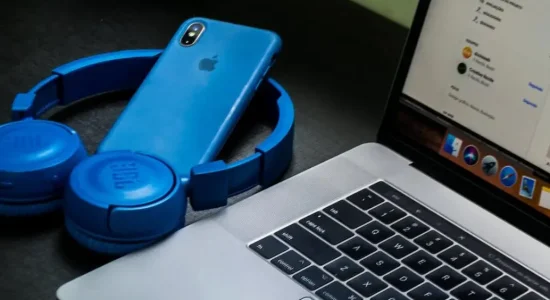Flea markets can be an excellent way to sell your crafts, art, jewelry, or specialty products. Some vendors even rely on selling at flea markets as their sole source of income. Others sell as a way to make extra cash and some people sell just for the fun of it without focusing on the profits.
Flea markets are very profitable if you take the time to research your market and optimize your booth for sales. You will have to pay booth rent and other vendor fees along with additional set-up costs. However, most vendors make around $200 a day in profits selling their products at flea markets.
How will you determine if selling your products at a flea market is a good fit for you? In this article, I’ll take you through a complete breakdown of the expenses of selling at a flea market, along with some information on how you can expect to turn a profit by selling at these markets.
General Expenses for Selling at Flea Markets
To understand how profitable a flea market is, you’ll need to consider all the expenses of selling at a flea market. Booth fees, set up costs, product stands, business cards, transportation costs, and other unexpected fees can add up quickly. You’ll have to know all of these upfront to determine if selling at a flea market will be profitable for you.
Vendor Booth Rent
It’s usually never free to rent a spot at a flea market. Vendor booths can cost anywhere between $35 and $200 depending on the size, location, day, and event. Some flea markets charge a flat rate per space, while others can charge varying fees depending on the size and location of the area.
Many well-known flea markets charge vendors more to reserve a spot because they are highly trafficked and popular markets. However, smaller flea markets might have lower booth rental fees. Research the flea market you’re interested in selling at so you can determine precisely how much you’ll have to pay for a booth.
If you plan to become a long-time vendor, there might be additional fees for your booth rent. You might have to pay deposits, usage fees, or licensing expenses, such as an occupational or business license that some states require for long-term vendors.
Generally speaking, there’s usually a low barrier for selling at flea markets, so they’re a great way to get your foot in the door and gain business exposure and selling experience.
Transportation Costs
It’s essential to consider your transportation costs when selling at a flea market. Will your car fit everything you want to sell, or will you need to rent a truck or a van to haul your merchandise?
Parking at flea markets is another expense. Some events provide free parking or street parking nearby, while other markets charge an additional parking fee if you need to park your vehicle. If parking isn’t free, you can plan to spend anywhere from $5 to $35 on a parking spot.
Gas is another factor you must consider when selling at a flea market. Some customers will travel for over an hour to a famous flea market, and you might have to do the same if you want to sell there. Consider how far you’ll have to travel to get to the market.
Do you live in the city and need to travel to the outskirts of a town? Or will you need to commute inside the city to sell? Or perhaps the best flea market is a few towns over. Calculate how much money you’ll spend on gas going to and coming from the flea market when considering your overall transportation costs.
Set-Up Costs
Booth rent and transportation costs aren’t the only expenses you’ll need to consider when selling at a flea market. You’ll need to determine how much it will cost to actually set up your booth. At the minimum, you’ll need a table, chair, and a method to accept payments, be it a cash box, card reading device, or a money transfer app like Venmo, Cash App, Paypal, or Zelle.
Flea markets are usually crowded, so many vendors like to make their space attractive and inviting to potential customers. You might also need to purchase a table cover and have your logo put on it. Additional costs include purchasing a banner or sign, business cards, or even a shelter to provide shade to you and your customers.
Here are some additional costs to consider when preparing your space for customers:
- Extra merchandise. You never want to sell out of your products halfway through the day, so you should bring a wide variety of merchandise for customers to choose from.
- Extension cords. Many flea markets will have electricity available at each spot. Ensure you have some extension cords on hand to plug in fans, chargers, or other devices you’ll need to sell your merchandise.
- Fan. A fan will be an excellent way to invite your customers in on a hot day. If you have a pop-up shelter and a fan blowing on your customers, they might be inclined to stay longer and check out your merchandise because of the cooler environment. A fan will also keep you cool during a long day of being outside.
- Plenty of change.
- Bags for customers to put their merchandise in.
- Lunch cooler, lunch box, or other lunch essentials.
- Mirrors. Mirrors are necessary if you’re selling jewelry or apparel.
- Garment racks or jewelry stands. These are necessary if you’re selling clothes or jewelry. Customers can easily comb through clothes when they’re on hangers rather than digging through piles of folded clothes on a table. Jewelry display stands allow you to easily display each piece and make it visible to potential customers.
- Other selling essentials that will help you and your customer. Hand sanitizer, sunscreen, bug spray, receipt book or notebook, stickers with your logo on the front, business cards, pens, tape, markers, scissors, cleaning wipes, props, display lighting, etc.
Taxes
Many sellers forget about taxes when selling at flea markets. If you live in a state that charges sales tax, your sales will likely be subject to the state tax. Some flea markets require vendors to absorb that tax, which will be an additional expense unless you adjust your prices to cover the tax.
Your income from flea markets could be considered taxable depending on how much money you make. If you’re a business owner selling at a flea market, you’re most likely used to paying taxes on your sales.
However, if you don’t have an official business or you’re just looking to make some extra cash, keep in mind that you might have to pay taxes on your sales when you file your taxes later on.
Financial Profit
After paying booth rent and other fees, most vendors make between $200-$500 a day at flea markets. You can increase your sales by doing everything possible to turn a profit. An additional factor to gaining more customers is to set up your booth in consideration of the traffic flow.
Put your best pieces in front so they will be visible to most people; that might not necessarily be at the very front of your booth, but it could be on the corner or side, depending on where customers are walking from. You could also purchase props, lighting fixtures, and signs to help your booth stand out among so many other vendors.
One of the biggest advantages to making a profit off of flea markets is that you don’t even have to have a bank account to reserve and withdraw your earnings. However, if you’re looking to venture into alternative forms of payment (besides cash) but you still don’t want to (or can’t) use a bank account, check out this article.
Business Exposure
For some flea market vendors, sales aren’t the most crucial part of flea markets. Flea markets are excellent ways to advertise, market, and promote your business. While some customers might not be ready to purchase that day, they can remember your business when the time is right for them to buy.
Having plenty of business cards handy is essential for prospective and actual customers. Existing customers know where to find you to buy more pieces, and future customers can keep your information in their back pockets for when they are ready to purchase.
Flea markets are an excellent way to organically build your brand or business and see what products attract the most interest. You can talk directly with customers and see what peaks their interest. Customers also get the advantage of chatting personally with you if they have any questions about an item. It’s an excellent way to establish connections, network, and market your business through word of mouth.
Other Factors To Consider for a Profitable Experience Selling at a Flea Market
When selling at a flea market, it’s essential to know the customer base that frequents that market. Know what items are popular at specific flea markets because one location might be great for one vendor and unprofitable for another.
Type of Flea Market
Consider the type of flea market you’re selling at to determine how profitable it will be for you. If you’re selling high-ticket items at a flea market where many products are inexpensive, you might not generate many sales.
Think about the customer base of the market. Are they older, younger, eclectic, reserved, wealthy, or middle class? Consider if you need to sell your product at a craft market, artisan market, or farmer’s market to get the most sales.
Booth Location
You’ll also need to consider the location of your vendor booth to determine how profitable your endeavor will be. If you’re located at the front, where all customers will pass by you, it’s more likely that you’ll generate sales. However, you might lose customers if you’re tucked away in a corner or a far-away location.
Your Interpersonal Skills
Like many businesses, sales depend on the day, time, and your customer’s mood. Your people skills come into play at flea markets because, with so much competition, your merchandise might not sell itself. Your interpersonal skills and ability to sell, engage customers, and persuade them to buy your product will make a difference in the number of sales you close.
If you’re not much of a people person, or you don’t like engaging face to face, a flea market might not be as profitable for you. You could consider using an online shop like Amazon or Etsy to sell your products instead.
Your Product and Pricing
To have a profitable experience in a flea market, you need to stand out with your product or pricing.
Sometimes, a unique or niche product sells itself because you don’t have any competition. But if several other stands are selling the same general type of product, you’ll need to compete via your pricing or offer a more unique, customizable, or superior product.
The Financial Breakdown
The following table summarizes the costs you can expect to incur when selling your products at a flea market. Fortunately, many of the set-up costs are one-time fees.
If you’re planning to sell continuously at different flea markets, you should have a return on your investment over time. If you’re looking just to sell once, consider all the upfront costs when venturing into selling at flea markets.
Calculate how much you would need to sell to break even and how much you would have to sell to turn a profit. You should also consider if gaining exposure even if you lose money is considered profitable for you.
| Booth Rent | $35-$200 |
| Transportation | $5-$35 |
| Booth Set Up Costs | $75-$300 |
| Taxes | Varies |
| Total | $115-$535 |
Ultimately, if you do decide that the practice isn’t profitable enough for you, there are plenty of other ventures that can bring you in some additional revenue. I highly recommend trying to generate passive income, as doing so will allow you to focus on your entrepreneurial pursuits while having a steady stream of money coming in every month.
Conclusion
Selling your products at a flea market can be a profitable experience; however, it’s essential to consider the upfront costs. You’ll need to budget for vendor booth rent, transportation, taxes, set-up expenses, and additional fees you might incur when selling.
Most vendors turn a profit of around $200 a day on slow days, ranging up to $500 on good days. Consider your market, location, and product when determining what flea market you want to sell at. If you’re planning on selling continuously, you can get an excellent return on your investment for the initial costs.







